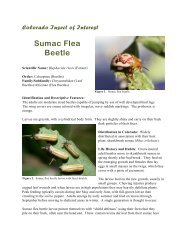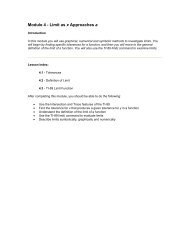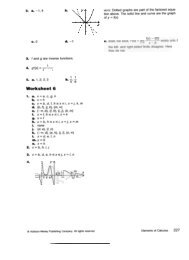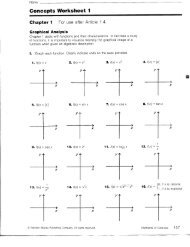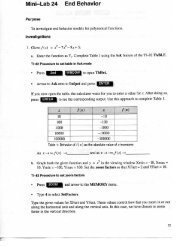The van Hiele Model of the Development of Geometric Thought
The van Hiele Model of the Development of Geometric Thought
The van Hiele Model of the Development of Geometric Thought
You also want an ePaper? Increase the reach of your titles
YUMPU automatically turns print PDFs into web optimized ePapers that Google loves.
12 LEARNING AND TEACHING GEOMETRY, K-U<br />
<strong>the</strong> arcs is <strong>the</strong> perpendicular bisector <strong>of</strong> <strong>the</strong> segment (i.e., use <strong>the</strong><br />
properties <strong>of</strong> a rhombus).<br />
Level 3 (Formal Deduction): <strong>The</strong> nature <strong>of</strong> deduction is understood. .<br />
Provide students opportunities-<br />
1. to identify what is given and what is to be proved in a problem<br />
For <strong>the</strong> following problem, identify what is known and what is to be<br />
proved or shown. Do NOT complete <strong>the</strong> pro<strong>of</strong>. "<strong>The</strong> perpendicular<br />
bisector <strong>of</strong> <strong>the</strong> base <strong>of</strong> an isosceles triangle passes through <strong>the</strong> vertex<br />
<strong>of</strong> <strong>the</strong> triangle."<br />
2. to idenhfy information implied by a figure or by given information<br />
Figure ABCD is a parallelogram. Discuss<br />
what you know about this figure. Write a<br />
problem in "If . . . <strong>the</strong>n . . Lzf<br />
." form based on<br />
this figure. D c<br />
3. to demonstrate an understanding <strong>of</strong> <strong>the</strong> meaning <strong>of</strong> undefined term,<br />
postulate, <strong>the</strong>orem, &finition, etc.,<br />
Which <strong>of</strong> <strong>the</strong> following statements is a postulate, a <strong>the</strong>orem, a definition?<br />
Why?<br />
a) Points that tie on <strong>the</strong> same line are called collinear. (Dl<br />
b) Dm points determine a Line. (PI<br />
c) Every segment has exactly one midpoint. (T)<br />
d) <strong>The</strong> midpoint <strong>of</strong> a segment is said to bisect <strong>the</strong> segment. (D)<br />
4. to demonstrate an understanding <strong>of</strong> necessary and sufficient conditions<br />
Write a d4nition <strong>of</strong> a square that begins<br />
a) A square is a quadrilateral . . .<br />
b) A square is a parallelogram . . .<br />
c) A square is a rectangle . . .<br />
d) A square is a rhombus . . .<br />
5. to prow rigorously <strong>the</strong> relationships developed informally at level 2<br />
6. to prove unfamiliar relationships<br />
7. to compare different pro<strong>of</strong>s <strong>of</strong> a <strong>the</strong>orem-for example, <strong>the</strong> Pytha-<br />
gorean <strong>the</strong>orem<br />
8. to use a variety <strong>of</strong> techniques <strong>of</strong> pro<strong>of</strong>-for example, syn<strong>the</strong>tic, trans-<br />
hrmations, coordinates, vectors<br />
9. to identrfy general strategies <strong>of</strong> pro<strong>of</strong><br />
I€ a pro<strong>of</strong> involves parallelism, try "saws," "ladders," or rotations <strong>of</strong><br />
180".




